

PEOPLE MANAGEMENT
CNAT consists of a team of 839 professionals characterised by their experience and high qualifications: 49% have a university degree.
There were 30 new recruits during 2016 and in all cases prior to their recruitment to their work place, they received initial training and specific training about their work place functions. New recruits facilitate staff turnover while ensuring the safe and reliable operation of the plants in the long-term.
CNAT staff, with an average age 50, are mainly concentrated in Extremadura (50%), Castilla-La Mancha (40%) and Madrid (10%). Also, the presence of women in the different groups within the company, stood at 9.65%, and there is an emphasis on the recruitment of young graduates with a broad qualification.
It should also be noted that CNAT staff are continuously supported by personnel from external companies during normal operation of the plants, and especially during refuelling.
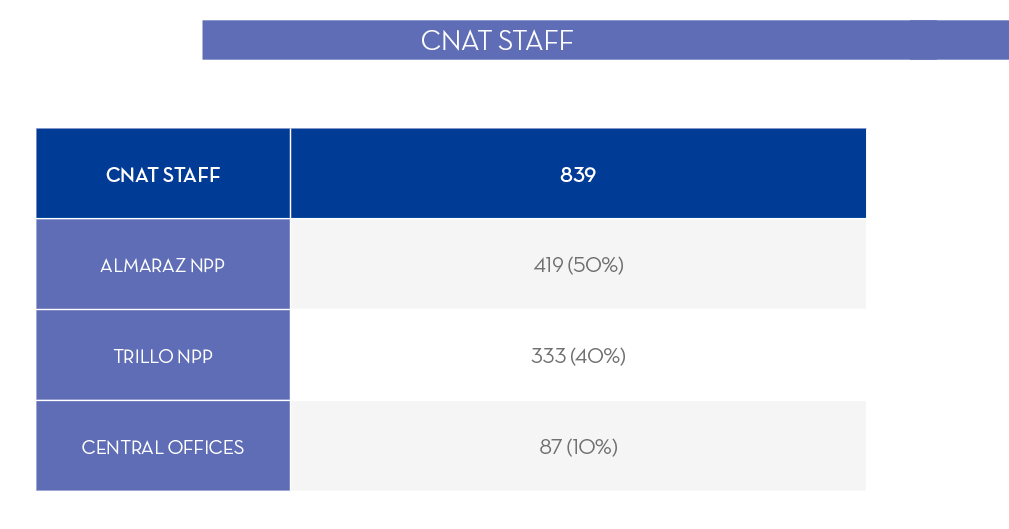
PREVENTION OF WORK-PLACE RISKS
Safety and health of people and the integration of prevention at all levels of the Organisation are a priority for CNAT. Proof of this are the actions performed during 2016 on the prevention of occupational hazards.
One of the most important factors in the prevention of occupational hazards in 2016 has been the decline in the number of accidents compared to 2015, a decrease of accidents with and without sick-leave of 34%. In the case of accidents with sick-leave, the reduction was 72%, down from 7 accidents with sick leave in 2015, to 2 in 2016. The good result recorded during refuellings, with 0 accidents with sick-leave during the Trillo refuelling, and during the Almaraz Unit I refuelling 24, and a total of 0 accidents during Almaraz Unit II refuelling 23. Another important milestone regarding the accident rate was the number of days without accidents with sick-leave at the Almaraz Plant. At 31 December 2016, the figure amounted to 557 days. Accident rates in CNAT in 2016 were:
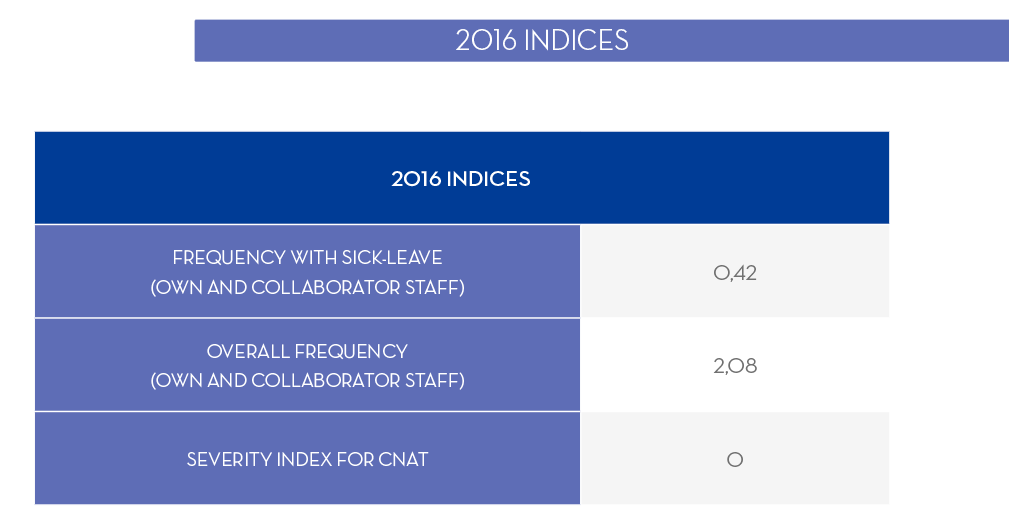
Another important aspect has been the decline in the number of incidents in the prevention of occupational hazards, at around 43%. It should not be forgot that that these incidents are precursors of accidents, and therefore supervision of work, adherence to procedures and awareness of prevention have been instrumental in reducing them.
Also noteworthy is the implementation of prevention observations during 2016. A total of 97 observations were conducted by Departmental and Section Heads, and Contracting Company managers. These observations are an effective tool to progress the integration of prevention, as well as a facilitator for supervising field work, and they enable the safe behaviour of individuals to be reinforced as well as the quality of work to be improved, by directly involving leaders.
Another measure implemented throughout 2016 and with impact on the integration of prevention, has been dissemination of the Safety Minute, which was shown in all meetings, both Management and coordination, as well as via the Intranet. This tool has enabled the lessons learned from accidents and incidents to be disseminated, as well as expectations regarding prevention of occupational hazards and preventive measures for the different risks in our installations.
With regard to contractors, significant efforts have been made by all to meet CNAT’s guidelines on prevention of occupational hazards. Several meetings have been held with Company managers to establish action plans to reduce adverse trends and a preventive culture index has been defined to classify them, considering the number of violations, accidents, incidents and Medical Service attendances for work-related reasons.
In addition, CNAT’s Prevention Service employs a Health Surveillance unit at each Plant, which is responsible for monitoring the health of workers in the three workplaces, and their medical examinations employ all specific health surveillance protocols required by the risk assessment conducted by Prevention Technical for each post.
Also, this unit performs functions of health care, support in medical emergencies or accidents, and maintains Level I accreditation for caring for irradiated and contaminated casualties.
With the aim of maintaining the health of our workers at the highest quality standards, in the planning of Preventive Activity for 2016, specific Health Surveillance activities, and a health promotion programme called “2016 Healthy Company Plan” were also introduced. The most significant actions of the Plan were briefings conducted at the three work centres on physical activity and healthy habits, and a Back-Care workshop taught by expert personnel which was well received by all personnel.
Colon cancer (faecal occult blood) screening and the oral pathology prevention campaign continued in 2016. A campaign was also conducted to prevent melanoma and dermatological pathology and a talk on “Keys to meet the challenges of everyday life”.
Also, the internal magazine “Mundo CNAT” contained reviews about healthy eating habits and diets, and an article prepared by health surveillance units about Fatty Liver prevention. The reception of all briefings and campaigns was very favourable, and there was a desire to repeat them and to introduce new actions.
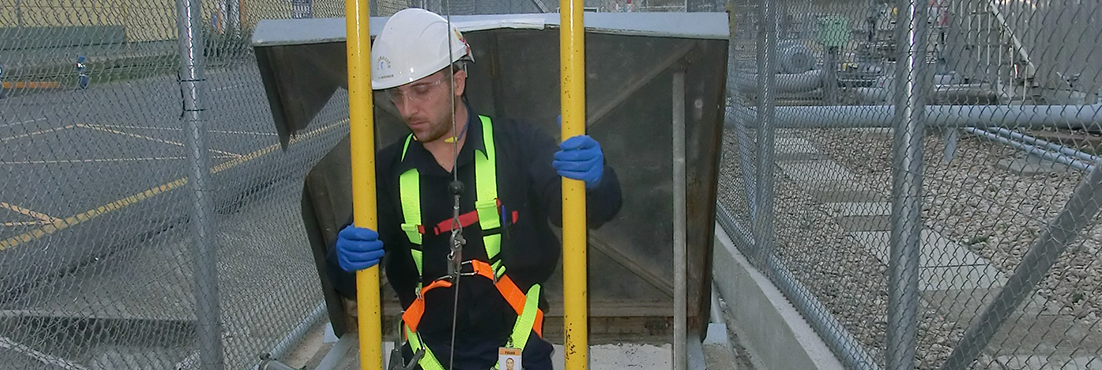
TRAINING
The skills of individuals working for the Almaraz-Trillo Nuclear Power Plants is one of the priority interest areas, and for that reason CNAT has permanent resources devoted to the planning and development of annual training plans for each work centre, not only with regard to initial training, but also for retraining and training in management skills.
In 2016, 535 initial and retraining courses were provided, which resulted in conducting 188,683 hours of training for 6,027 workers, including future plant operators (34 young students in training).
The part of the training programme dedicated to the retraining of workers represented 44%, and that corresponding to initial training was 56%.
During the year, 831 CNAT employees (99% of the total) participated in training activities, totalling 68,646 hours of training, and the average training hours per employee was 83 hours, representing an annual day dedication ratio of 5%. The training programmes for future plant operators, prior to joining the workforce, resulted in the implementation of more than 37,148 hours training during the year.
Regarding monitoring the qualification of contracting personnel, CNAT continued to encourage improvements in their training, by providing support for training activities planned for their staff, and by arranging specific training action for these workers. In 2016, 82,889 hours of training were dedicated for 5,162 workers of contracting companies.
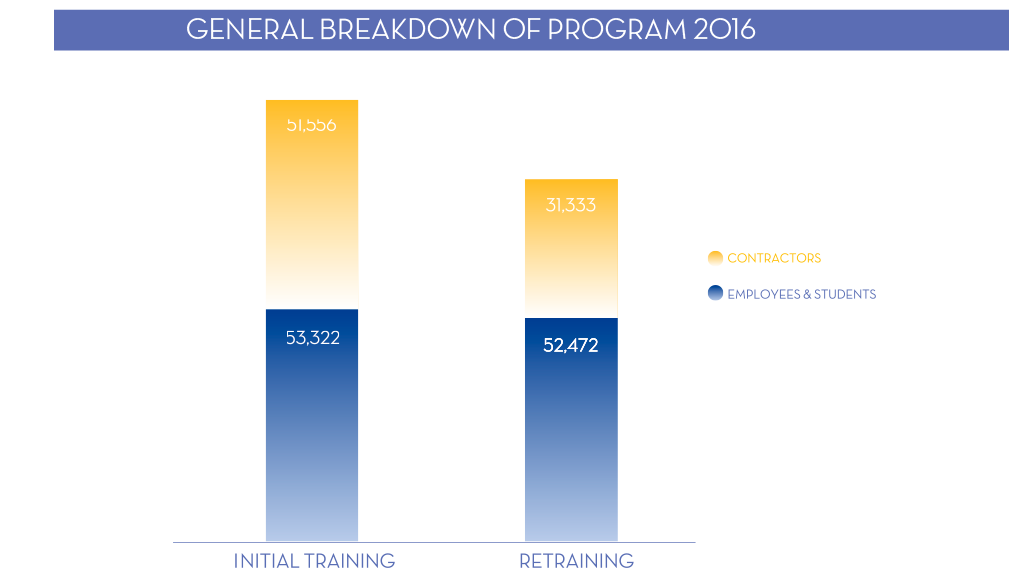
INTERNAL ACOMMUNICATIONS
Internal communication is key to CNAT acquiring a fundamental and cross-company role. For this purpose, several initiatives have been launched, and others already internalised and recognised by the organisation have been reinforced.
The Internal Communication Plan, together with the Almaraz NPP Action Plan have outlined the directions to be taken during the year. CNAT employees use various communication channels that the company offers including the internal magazine “Mundo CNAT” and the monthly newsletter “En 5 minutos”. During 2016, the video format was established as an internal communication tool highlighting the “Safety Minutes”, targeted at occupational risk prevention.
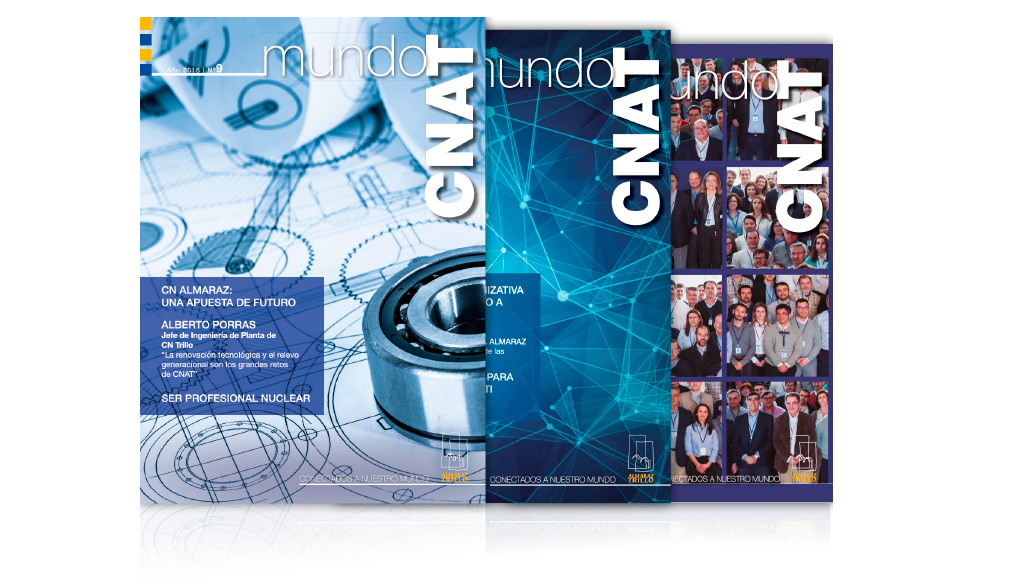
RELATIONS WITH SOCIETY
CNAT continues to have direct, fluid and stable relationships with institutions in surrounding areas, and in 2016 semi-annual meetings were held, two at each plant, with the mayors of nearby councils and with the media. All the information concerning operational results is presented at these meetings together with news about future plans and projects. 145 personalised meetings were also held with mayors of surrounding councils to study on a bilateral basis the relationships of the Plants with each municipality and potential collaboration channels. In addition, this year the management of both plants are actively involved in local Information Committees, convened by the Ministry of Industry, Tourism and Trade, and they provide all information required whenever necessary.
The commitment of Almaraz and Trillo NPPs to their neighbouring communities is reflected in the cooperation agreements that have been renewed in the fields of economic and social, environmental and educational development projects.
Similarly, CNAT has renewed cooperation agreements with news and press agencies most representative of the Plant environs, and these are used to promote the training and specialisation of Information Science final year students on nuclear sourced electricity production. A nuclear technology course for communication media professionals was also held at the Trillo installation, which is run annually.
The informative actions by CNAT on nuclear energy and on the operation of its plants is confirmed by the welcoming of 8,684 visitors this year to the Information Centres, 3,641 at Almaraz and 5,043 at Trillo. Between the two Plants, over one million people have visited the Almaraz and Trillo installations since they began operating in 1977 and 1981 respectively. Meanwhile, both the website (www.cnat.es) and the blog www.energiaymas.es, contribute to the task of creating closer ties with the nuclear world by providing relevant information about the activity of the plants and their environments.
To ensure continuous improvement of the quality of products and associated services, CNAT ensures that its suppliers are aware of and participate in the company’s work processes and protocols.
Trading volume in 2016 was € 251.2 M. Of the total number of identified suppliers (762) with contract awards, 92.12% (702) are domestic suppliers.



